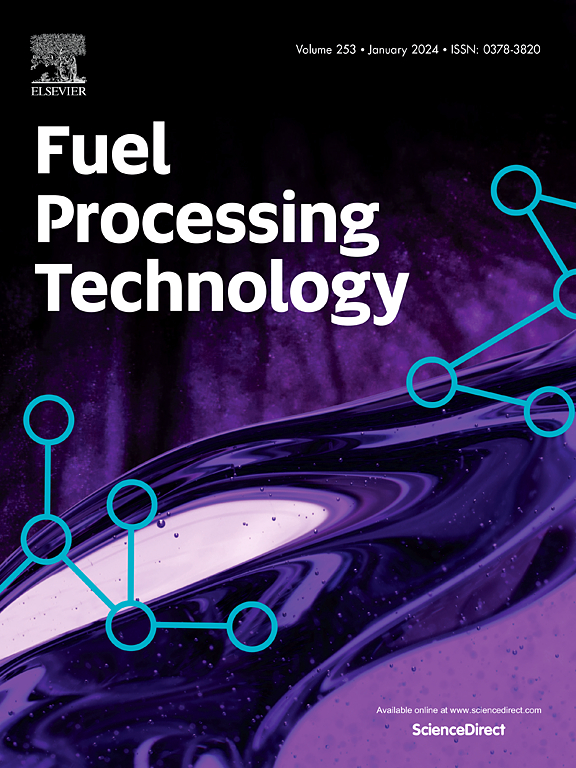Experimental and numerical investigation on effect of fluidization degree and temperature on bed agglomeration during bioslurry fast pyrolysis in a fluidized bed
IF 7.2
2区 工程技术
Q1 CHEMISTRY, APPLIED
引用次数: 0
Abstract
Bioslurry utilized in fluidized beds may occur bed agglomeration, and understanding the formation of bed agglomeration is significant for bioslurry efficient utilization. This study investigated the effects of fluidization degree and temperature on bed agglomeration during fast pyrolysis of bioslurry by numerical simulation and experiments. The findings indicated when the flow rate of fluidizing gas increased from 1.0 to 3.0 L/min, the agglomeration yield rose from 31.16 % to 48.08 %. Combined with the numerical simulation, it was proved that 2.0 L/min was the optimum flow rate for effective fluidization. Below it, fluidization could not be achieved and some sand particles were not contact with fuel. Above it, local agglomerations were caused by excessive gas flow. Research on the correlation between bed agglomeration and tar/char revealed that bed agglomeration was primarily governed by fluidization efficiency, not by tar/coke. Furthermore, increasing pyrolysis temperature effectively reduced the agglomeration yield. As the temperature rose from 300 to 800 °C, the agglomeration yield decreased from 52.58 % to 9.84 %. However, when temperature > 600 °C, further increasing temperature had a limited effect on mitigating agglomeration. Additionally, there was a linear positive correlation between bed agglomeration due to tar/coke and tar/coke yield, with coke consistently playing a key role.
生物浆在流化床快速热解过程中,流化程度和温度对床层团聚影响的实验与数值研究
生物浆在流化床中的利用可能会发生床团聚现象,了解床团聚现象的形成对生物浆的高效利用具有重要意义。通过数值模拟和实验研究了生物浆快速热解过程中流化程度和温度对床层团聚的影响。结果表明:当流化气体流量由1.0 L/min增加到3.0 L/min时,团聚率由31.16%提高到48.08%;结合数值模拟,证明2.0 L/min为有效流化的最佳流量。在它下面,流化不能实现,一些沙粒不能与燃料接触。在它上面,局部聚集是由于过度的气体流动造成的。研究了床层团聚与焦油/焦的关系,发现床层团聚主要受流化效率的影响,而不受焦油/焦的影响。提高热解温度可有效降低团聚率。当温度从300℃升高到800℃时,团聚率从52.58%下降到9.84%。然而,当温度>;600℃时,进一步提高温度对减轻团聚的效果有限。此外,焦油/焦炭引起的床层结块与焦油/焦炭产量呈线性正相关,其中焦炭一直起着关键作用。
本文章由计算机程序翻译,如有差异,请以英文原文为准。
求助全文
约1分钟内获得全文
求助全文
来源期刊

Fuel Processing Technology
工程技术-工程:化工
CiteScore
13.20
自引率
9.30%
发文量
398
审稿时长
26 days
期刊介绍:
Fuel Processing Technology (FPT) deals with the scientific and technological aspects of converting fossil and renewable resources to clean fuels, value-added chemicals, fuel-related advanced carbon materials and by-products. In addition to the traditional non-nuclear fossil fuels, biomass and wastes, papers on the integration of renewables such as solar and wind energy and energy storage into the fuel processing processes, as well as papers on the production and conversion of non-carbon-containing fuels such as hydrogen and ammonia, are also welcome. While chemical conversion is emphasized, papers on advanced physical conversion processes are also considered for publication in FPT. Papers on the fundamental aspects of fuel structure and properties will also be considered.
 求助内容:
求助内容: 应助结果提醒方式:
应助结果提醒方式:


